There is a Shochu(Japanese distilled spirit) bar, named “Glocal BAR Vibes” on Shimotori street downtown Kumamoto. I have been to that bar almost 2 years now(I will introduce this amazing bar and energetic owner, Nori-san sometime soon!). The owner has visited over 80 Shochu makers and there are almost 120 kinds of Shochu at the bar. You can explore the great journey of Shochu in each area presents.
At the bar, there is one small shelf called, “Vibes Library”. The interesting thing about this library is that an owner and a borrower of a book will gather and talk about the book.
Last spring, I read this book, “肥後の石工(Higo-no Ishiku, Stonemasons in Kumamoto)” and I totally fell in love with it(Check the article below. I explained about the book and the history of stonemasons in Kumamoto).
I brought the book to the bar and some time later, one architect named Furuichi-san picked my book. Later we met and had a great time to discuss about the book(I heard Mrs. Furuichi also loved the book!). At that time, he brought this book, ”ある村の幕末・明治(Aru Mura no Bakumatsu Meiji, literally translated as History of a village from the end of Edo to Meiji period(19 to 20th century))”.
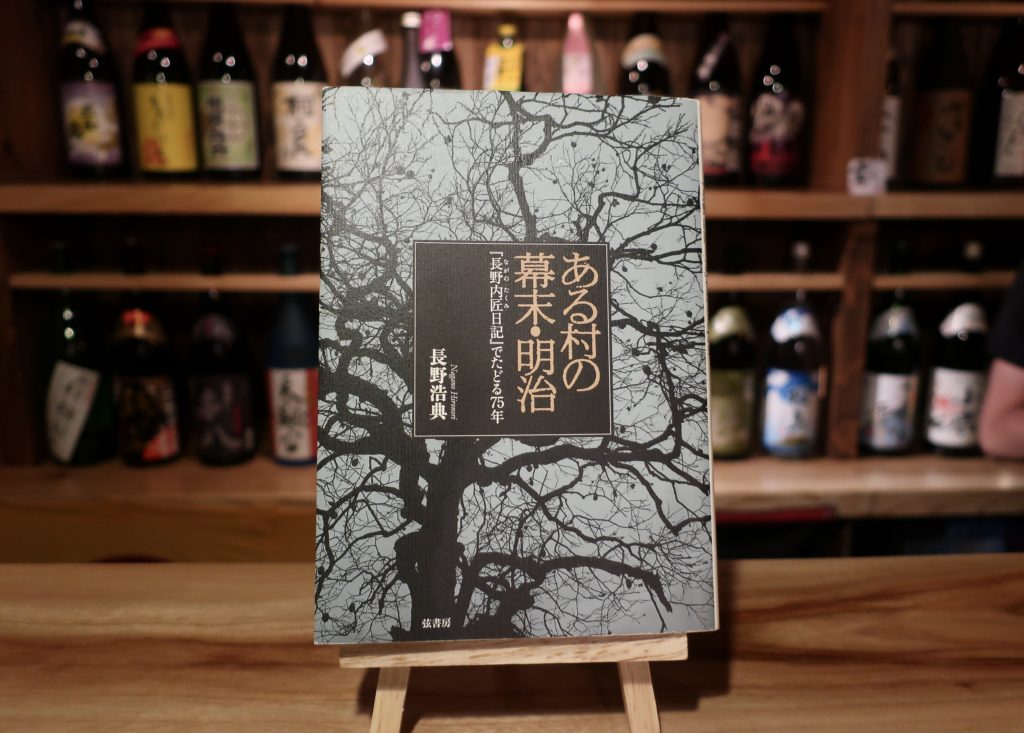
This book was edited based on a diary written by 長野内匠(Takumi Nagano) who was from 長野村(Nagano Village, this area is now a part of Minamiaso Village which is the southern part of Aso). Surprisingly and impressively, Takumi kept his journal for almost 65 years. Interestingly, Mr. Nagano was a samurai, a farmer, an educator, a craftsman, a merchant, etc. It was very unusual being like him at that time because people were clearly classified into one certain social position. Because of his unique position in the village, we can get a glimpse of how the life of common people was from many perspective.
After reading this book, I felt the great importance of passing on lives and stories of common people. Every place has each history and even a small one, we should hand down it to the next generation. Otherwise they will be forgotten.
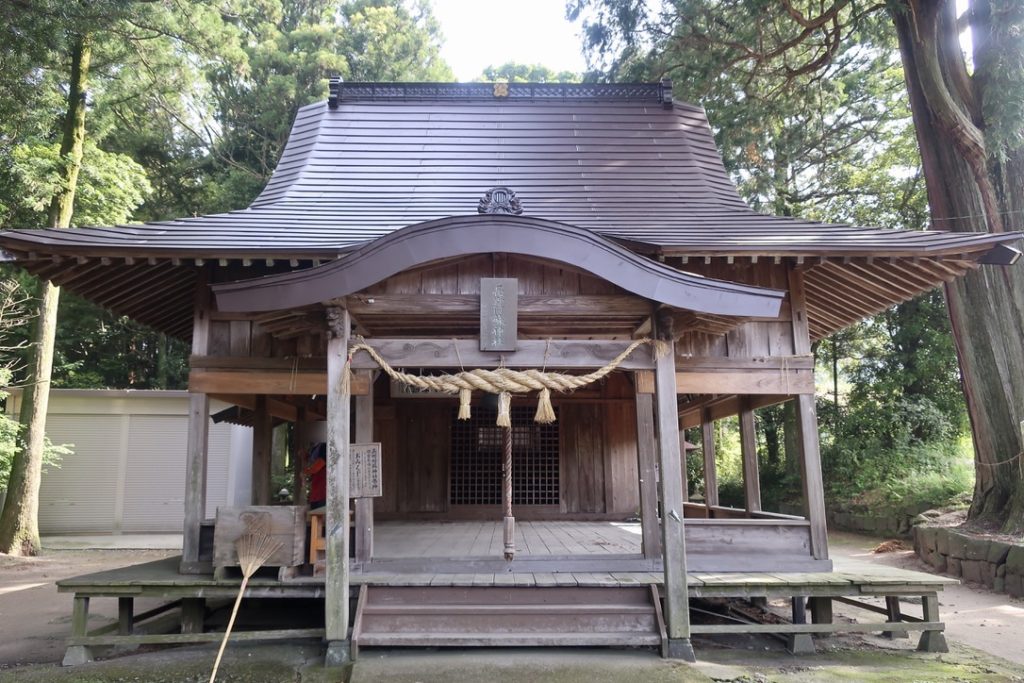
Today, I’d like to introduce you 長野阿蘇神社(Nagano Aso Shrine) in Minamiaso Village. After reading the book I borrowed from Furuichi-san, I visited Nagano area to see what it is like and to feel the environment where Takumi Nagano lived in the past.
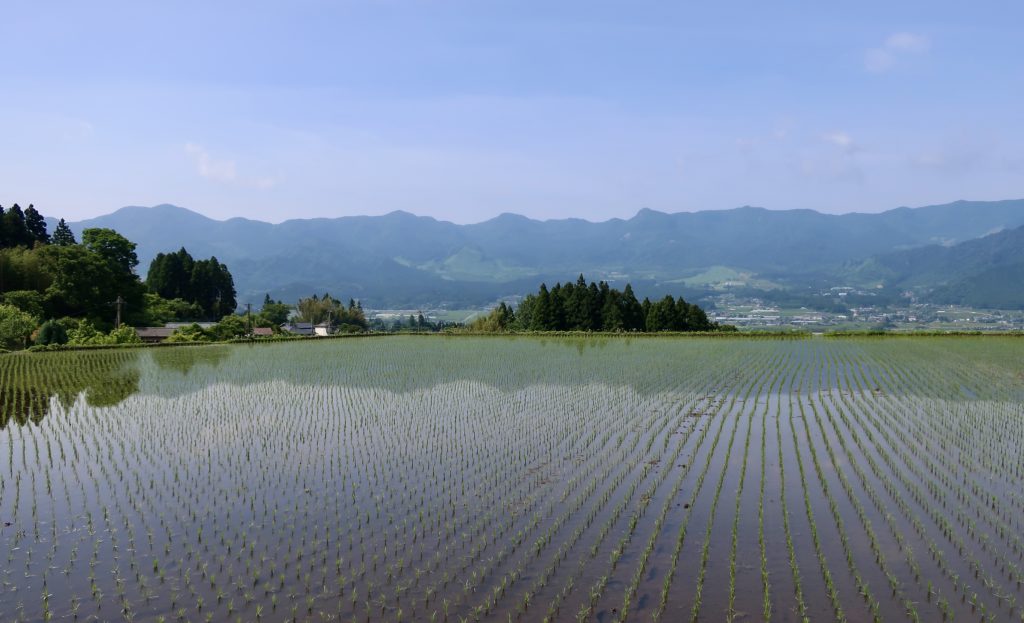
I drove to southern Aso in June 2020 after the regulations have been relaxed. It was such a beautiful day and I saw many rice fields which was filled with water and fresh rice plants. This is one of the highlights of this season. The more I searched about Nagano Aso Shrine, the more interesting stories I found(this article became much longer than I expected!). Let’s see how Nagano Aso Shrine is and what stories they have.
Contents
Nagano Aso Shrine(長野阿蘇神社) in Minamiaso Village(南阿蘇村)
Nagano Aso Shrine(長野阿蘇神社)
Surrounding of Nagano Aso Shrine(長野阿蘇神社)
Nagano Aso Shrine locates in the area called 長野(Nagano) which is a part of Minamiaso Village, Aso county. It takes about an hour by car from the centre of Kumamoto City.
First, let’s explore around Nagano Aso Shrine.
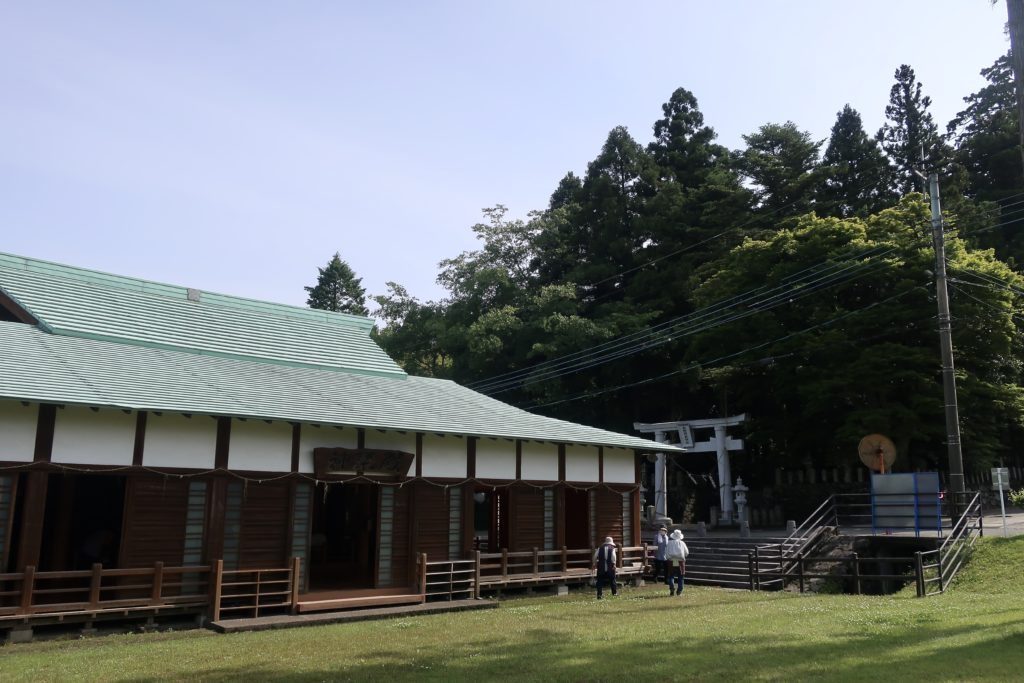
In front of the parking lot, you will see 神楽殿(Kaguraden hall) and this small lovely park(surprisingly, Furuichi-san involved in building the hall and making the park before!).
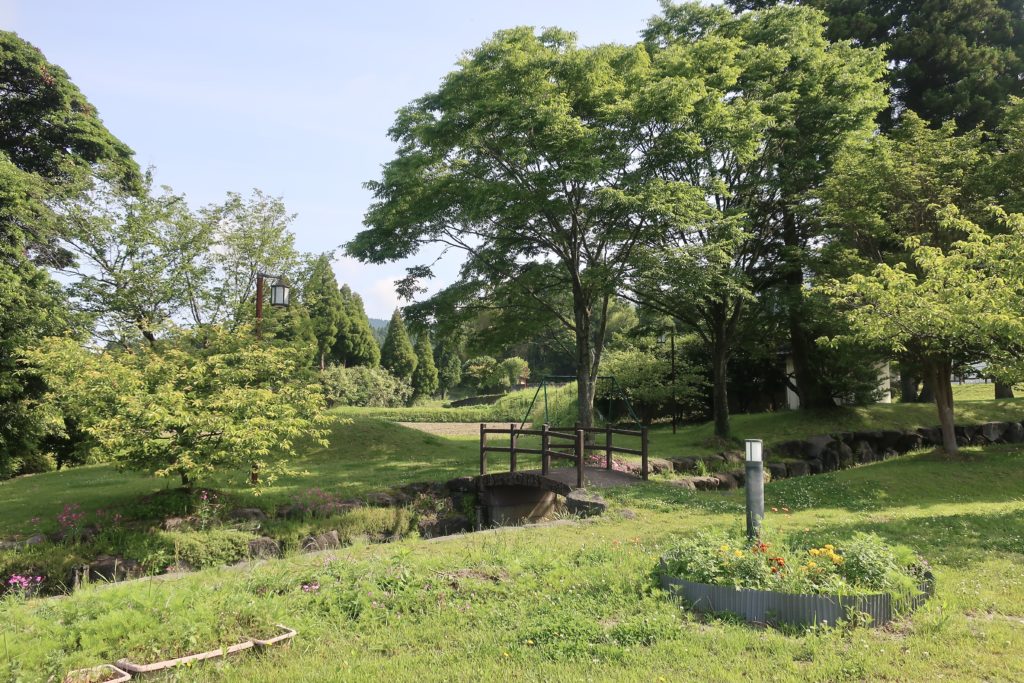
In the park, you can see the small stone bridge and water running through. As I shared in the previous article, Minamiaso Village is well-known as the place where water is sprung and there are many spring sources and onsen(hot spring) spots. I guess they express how water is close to local people in Minamiaso Village.
⬇️Check the article below and get to know about Minamiaso Village.
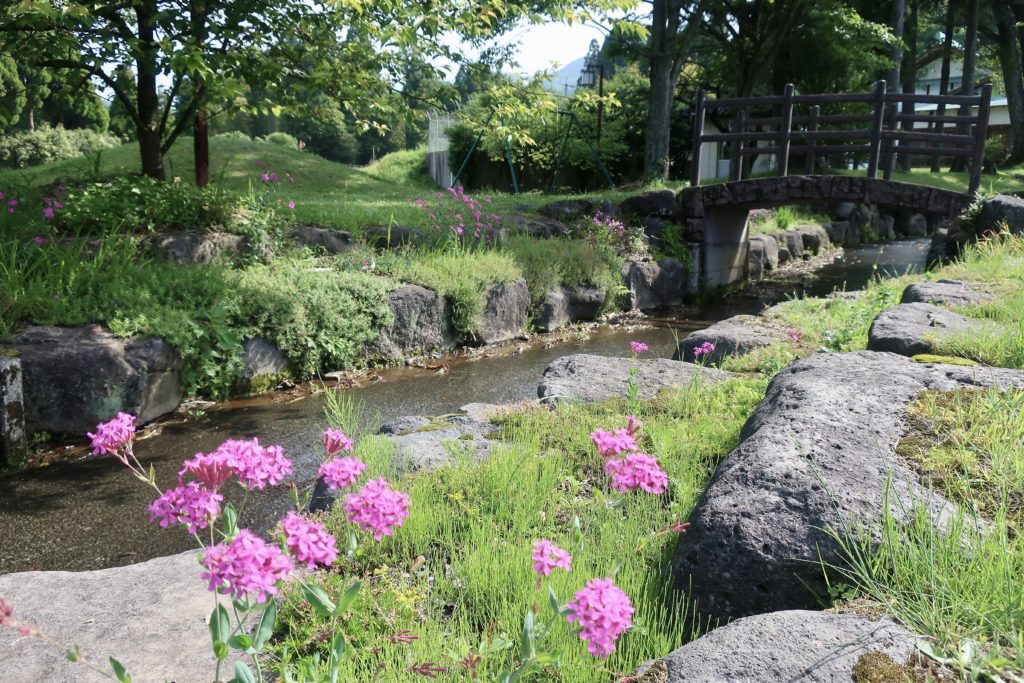
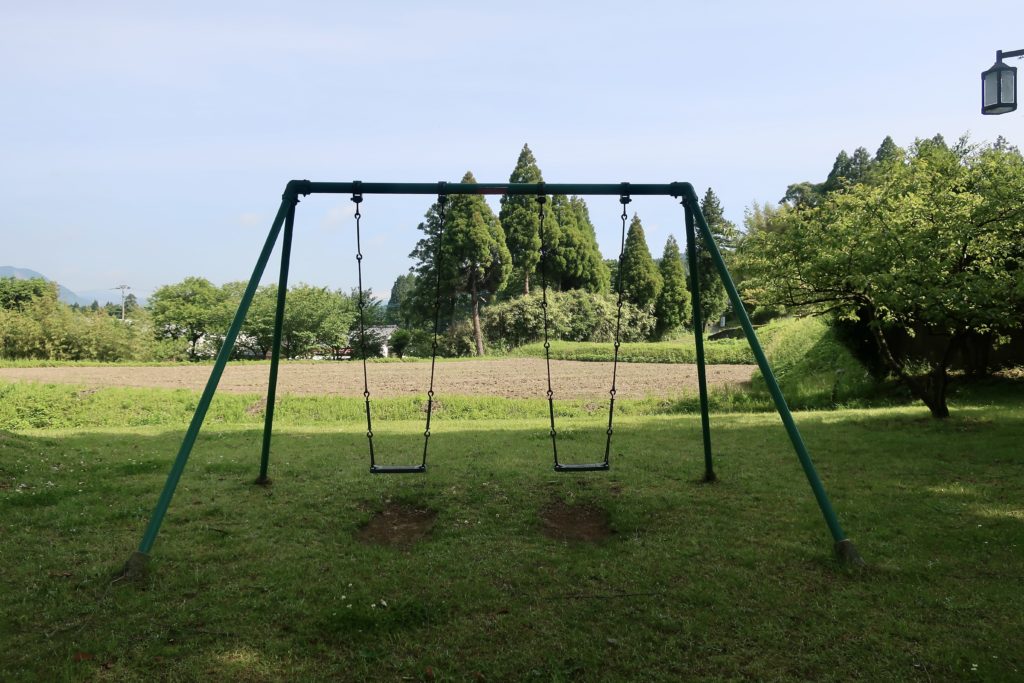
I kind of expected not to see anyone there because Nagano Aso Shrine is not well-known at all. But I saw some elderly people were gathering towards the shrine and heard some music. One lady talked to me and said it was their regular gathering to clean up around the shrine. She said it was also their first gathering after corona situation.
History of Nagano Aso Shrine(長野阿蘇神社)
In Edo period(17 to 19th century), there used to be over 10 shrines in Nagano area. In the middle of 19th century, the new Meiji Government ordered them to unify these shrines into one. That is why Nagano Aso Shrine worships a lot of deities. In this area, there were many retainers of Aso Family who used to rule Aso area. So the shrine had had many connection to Aso Family and it was named “Nagano Aso Shrine”.
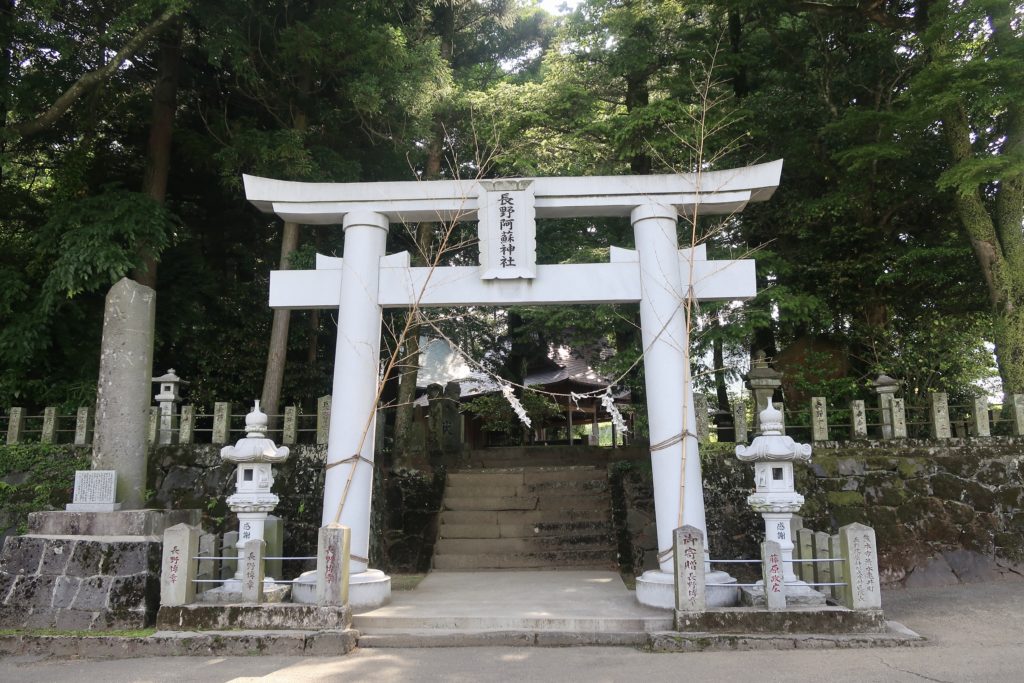
Passing the hall and then you will see this 鳥居(Torii gate). You may think it’s rather new. I heard that the previous Torii gate was collapsed after the huge damage by the earthquake in 2016. At that time, Nagano area was severely damaged. To pass on the history of the earthquake, they placed a remain from the previous gate next to the new one.
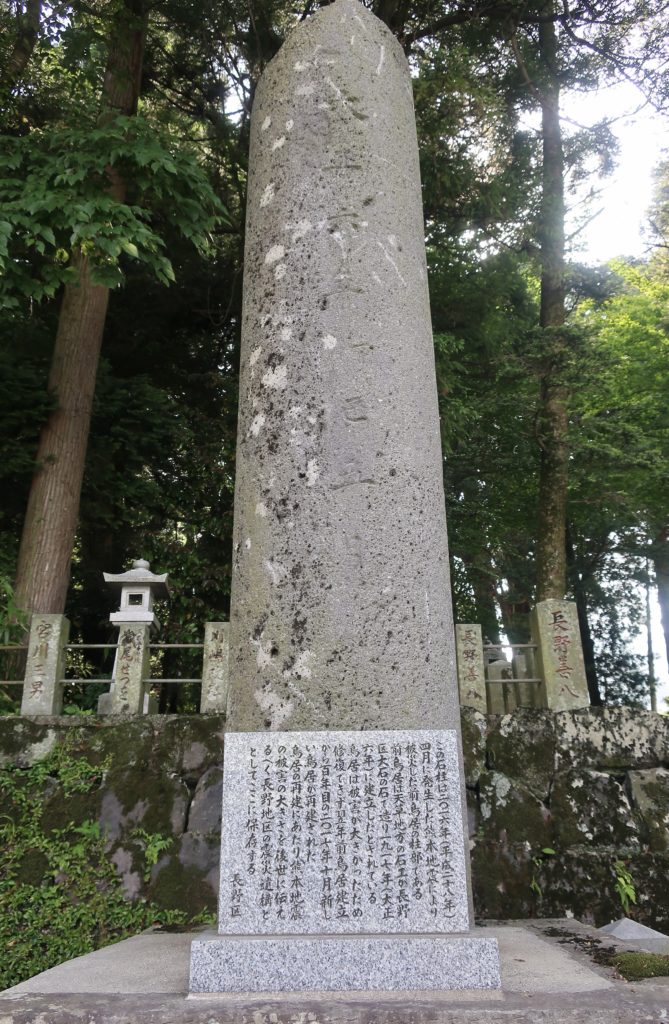
Around the shrine, you can see these stone with names on them. These names are from people who donated when they built the shrine.
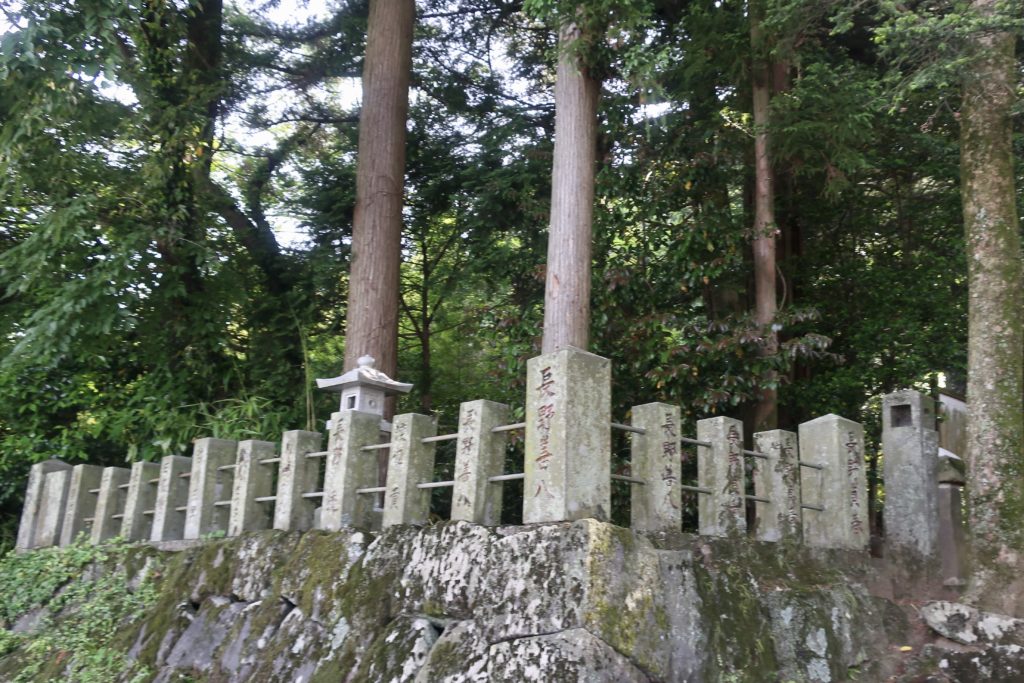
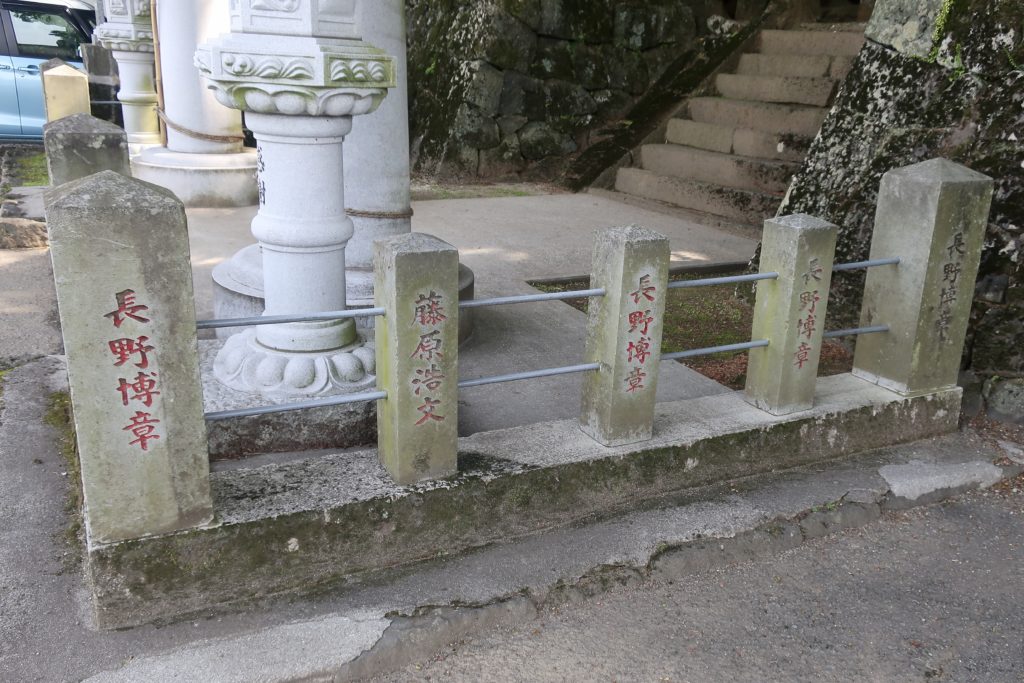
Do you notice something? There are too many 長野(Nagano)! I asked the lady I met earlier if there are many people whose name is Nagano. She said “I’m Nagano.” and showed me a list. It was a list of the people who were supposed to gather on that day and surprisingly, 2/3 of people were Nagano san!
I just wondered how people started to have surname in Japan so I will share it briefly. After 1875, all Japanese started to be allowed to have family name. Previously, only people with high social status such as nobles, samurai, merchants could have their surname. So how did common people decide which surname to use? I heard there are some patterns. Some people asked a priest or a governor of their village to name them. Others named by themselves. In that case, locals gathered and decided to use the same last name so that they could strengthen solidarity. They took their family name from the place they live, the scenery they see(mountain, rice field, lake, valley, etc), the direction they live(north, west, south and east), their occupation, the master they belonged to, etc. So in this Nagano area, people took their family name from their hometown and still now there are many Nagano-san in Nagano area. It will be more interesting to find out the origin of names!
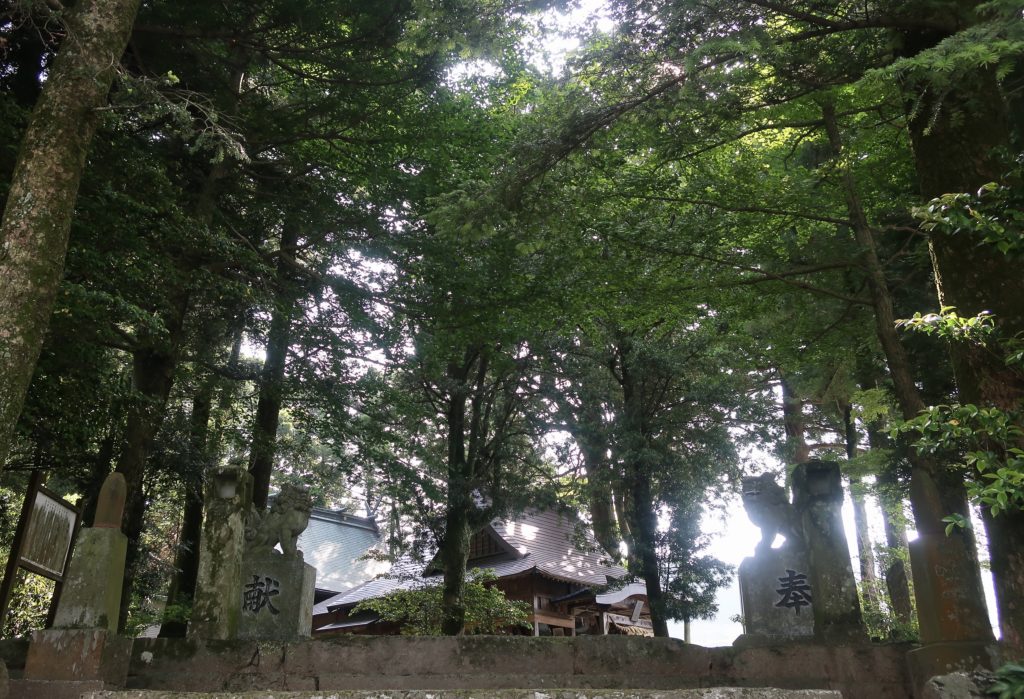
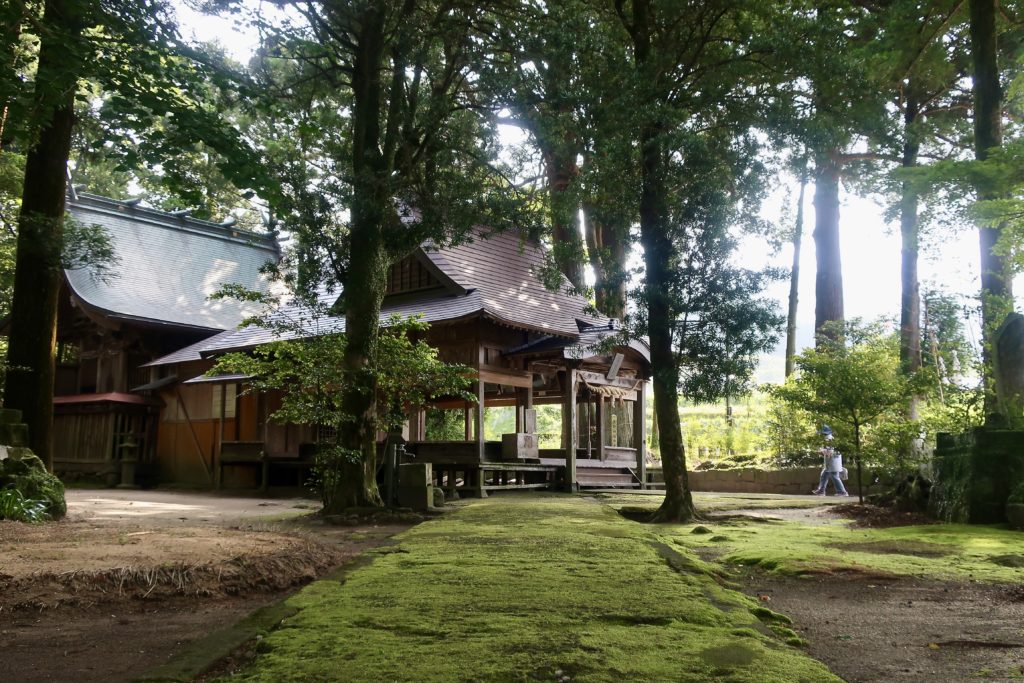
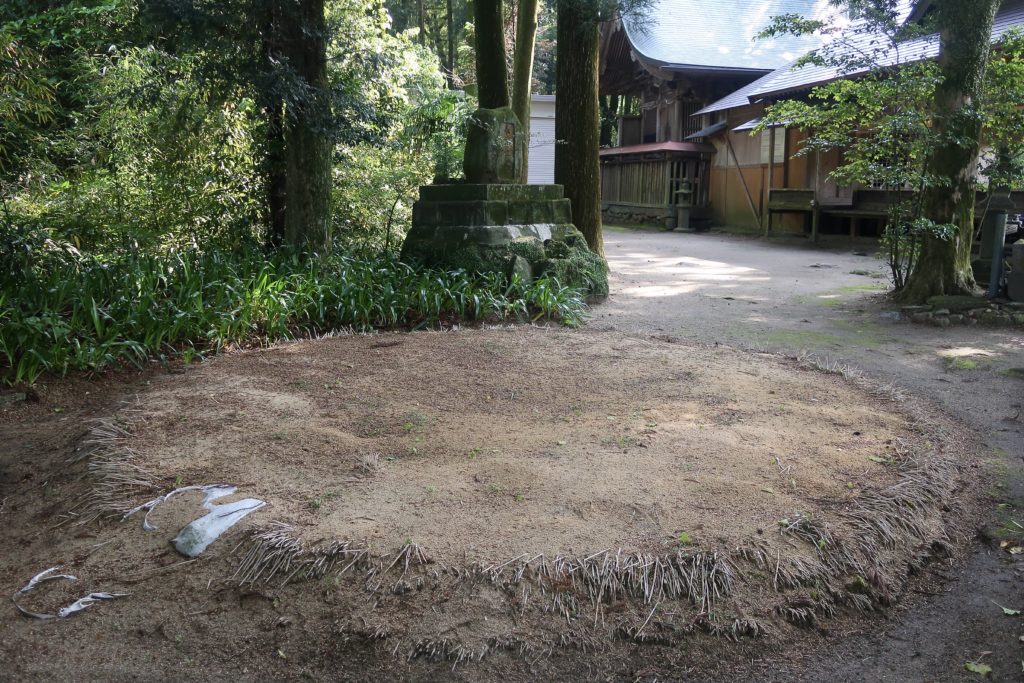
You cross the Torii gate and will find this sumo ring on your left. Many shrines have sumo rings in their ground. Originally, sumo was played as a ritual service wishing for bountiful harvest. I heard they have a kids sumo competition on the day of autumn festival.

This is the worship hall of Nagano Aso Shrine. You may notice the roof is new. After the earthquake in 2016, this worship hall was also damaged. Locals repaired little by little by themselves but still they had suffered bad roof leak. They decided to start crowdfunding before the leaks would get more serious. In this spring, they could finally finish to reroof.
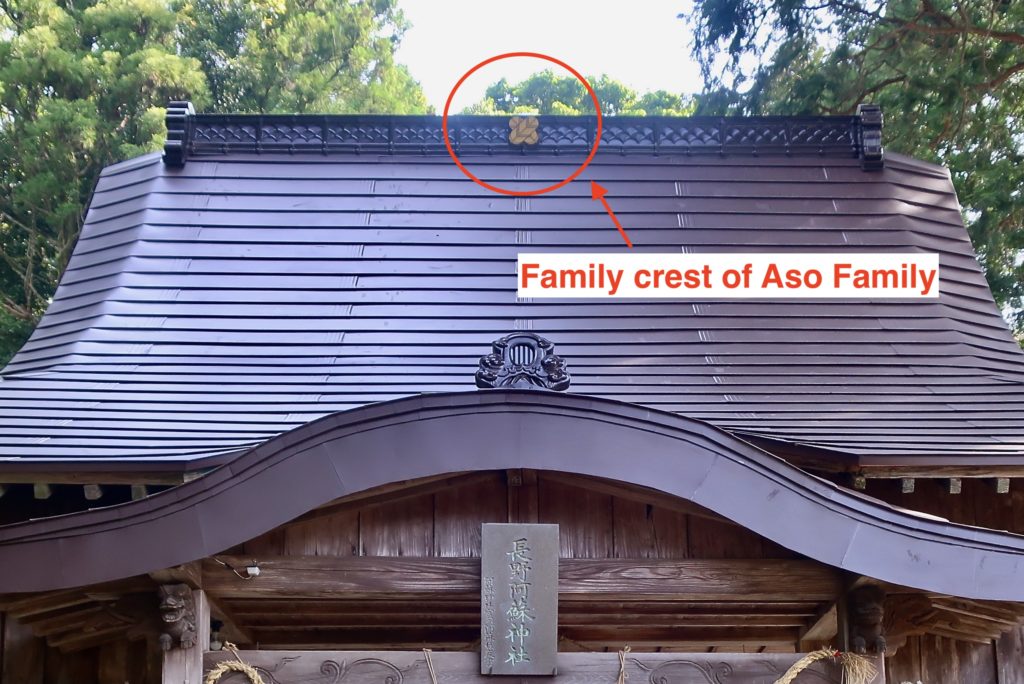
You will find a family crest of Aso Family on the top of the roof. As I shared, this is because many people in the area used to be retainers of Aso Family who used to rule Aso area.
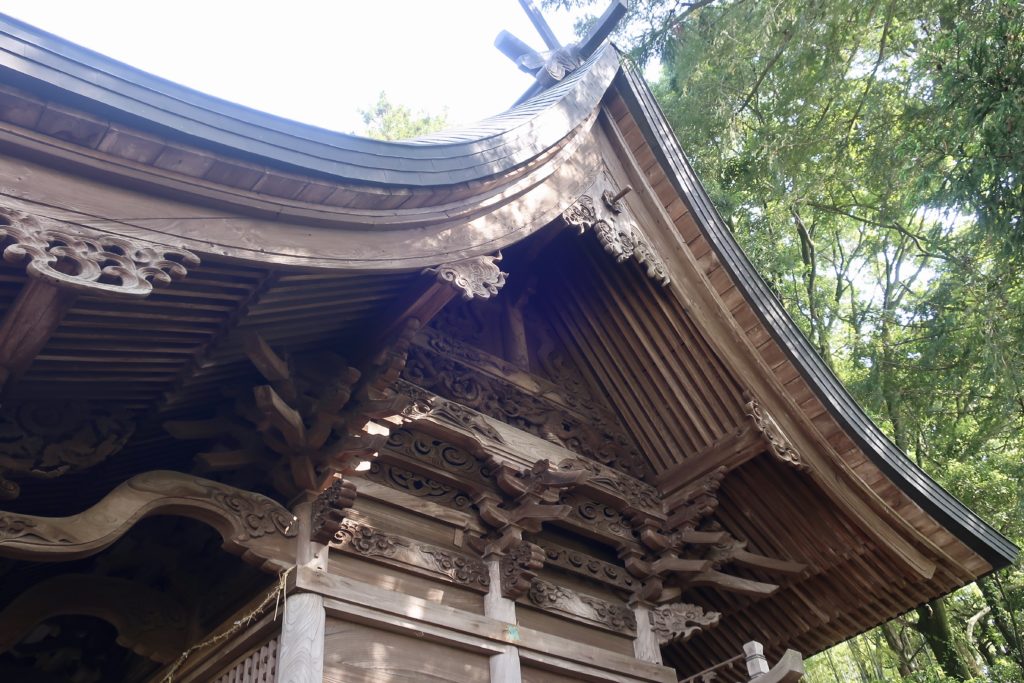
※ At Nagano Aso Shrine, there are two Torii gates, which is the one near to the Kaguraden hall(the one I shared) and the other is just in front of the worship hall. I questioned which one is an official Torii gate and why the one from the hall spreads diagonal to the worship hall. I checked on the internet and asked some people but I couldn’t find the answer. When I find out, I will add here!
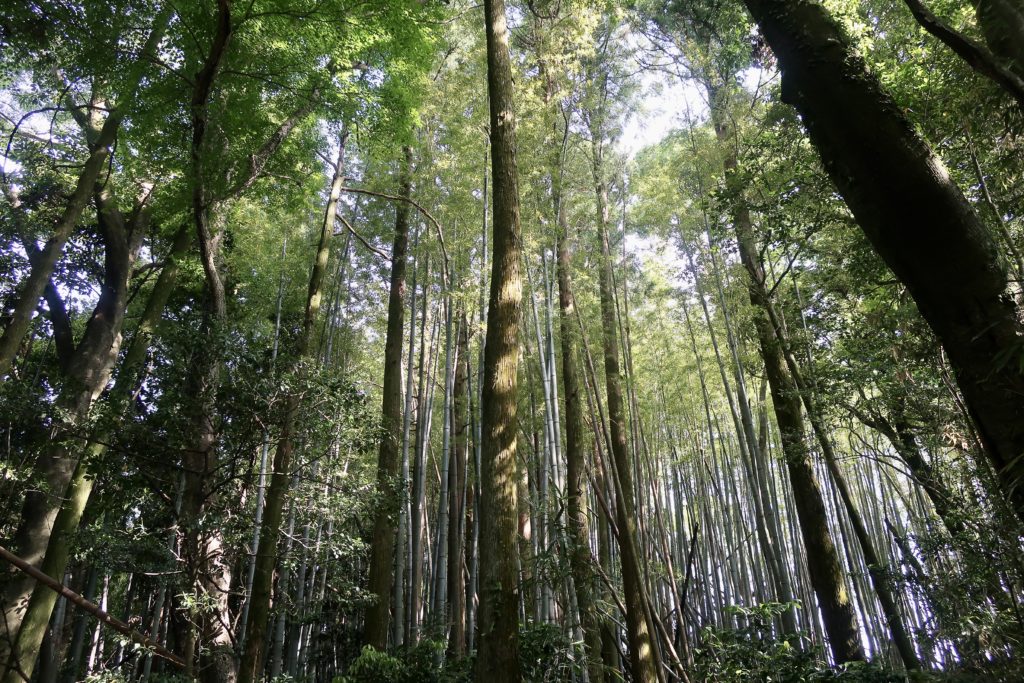
Husband and Wife Cypress(Meoto Hinoki, 夫婦檜) Beautiful Aso Nangohi Cypress(阿蘇南郷檜) indigenous cypress in Aso
On the right side of the worship hall, you will find this pair of cypress. People call them “夫婦檜(Meoto Hinoki)” means husband and wife cypress. It looks like two trees but actually it is one cypress and the trunk separates and grow straight closely.
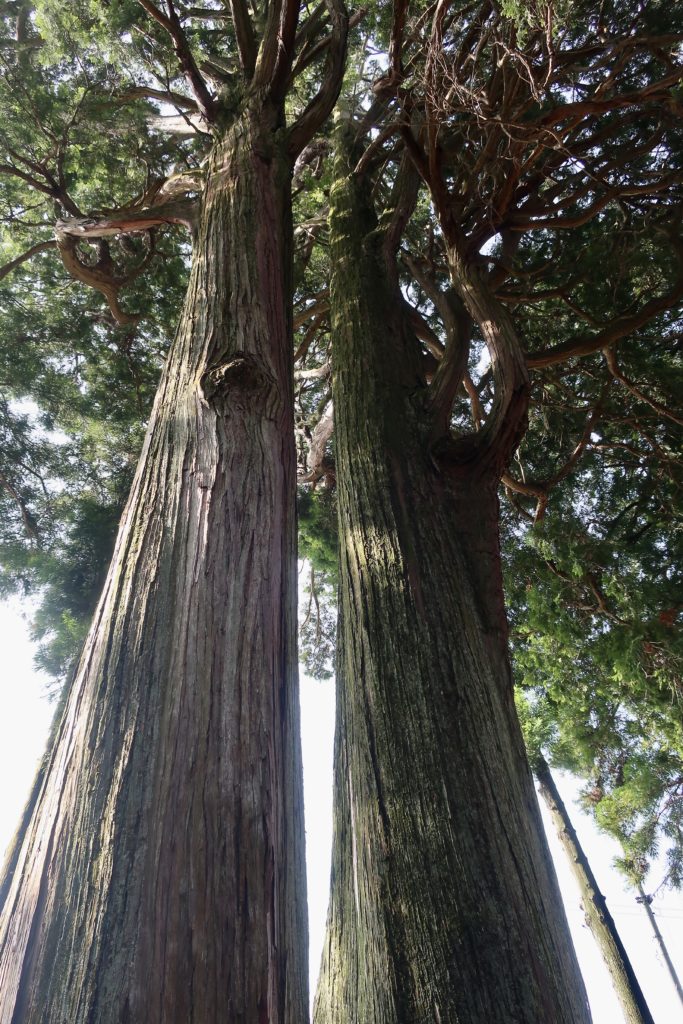
This cypress is 御神木(Goshimboku) of Nagano Aso Shrine. Goshimboku means a sacred tree in the shrine which protects it from evil. It is said it is almost 500 yeas old.
When I was checking about this husband and wife cypress, I reached to one website, called “阿蘇 南郷檜(Aso Nangohi)”. Aso Nangohi means Japanese cypress which is indigenous to Aso area. Comparing to a general cypress, this Aso Nangohi cypress has almost perfect-circle and high-density trunk and grows straight to the foot to the top.
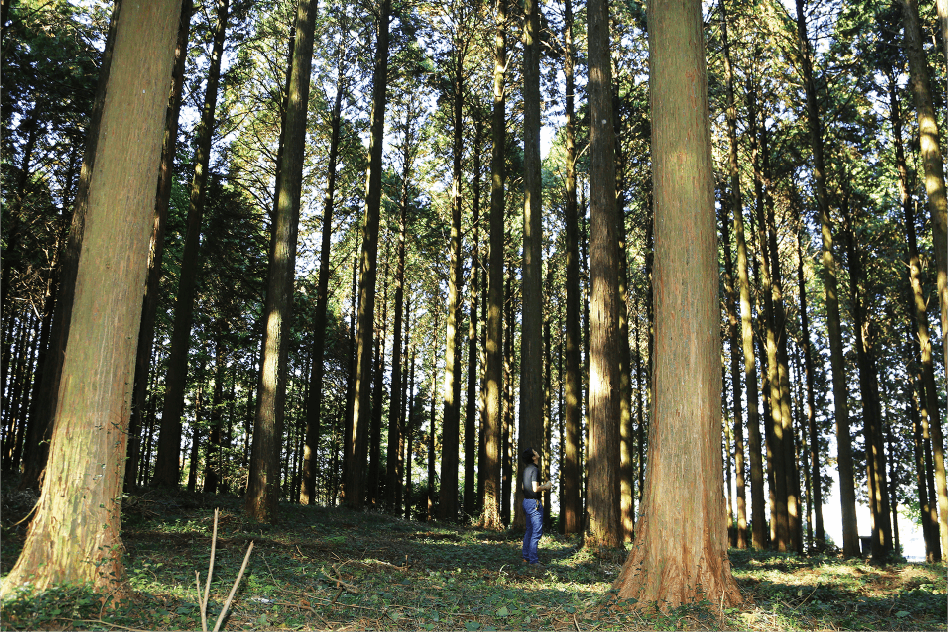
People in Aso used to use Aso Nangohi cypress to make shrines or masts to local government’s ships. Because of the beautiful and divine looks, people also worship them as Goshimboku at some shrines in Aso.
Kaguraden Hall(神楽殿) and the dynamic Nagano Iwato Kagura Performance(長野岩戸神楽)
What is Kagura performance(神楽)?
In front of the parking lot, there is a 神楽殿(Kaguraden hall). Kaguraden hall is a place where people have 神楽(Kagura performance) which is one of the Shintoism rituals with sacred music and dance performance at shrines.
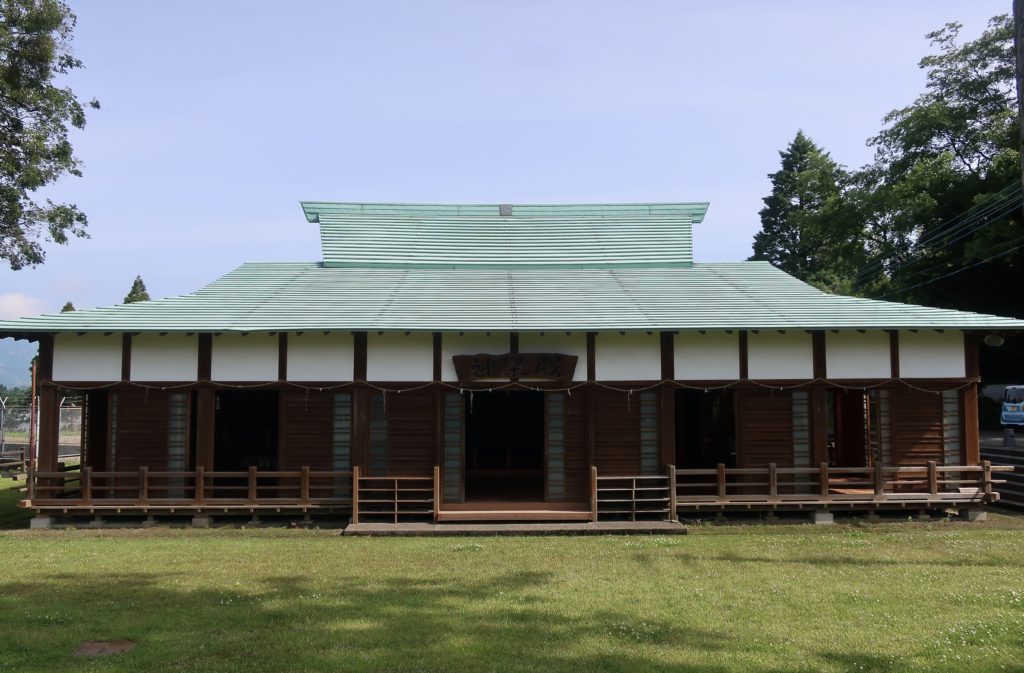
By performing Kagura, people invite gods to a shrine, convey their appreciation to gods for always protecting them from evil and cerebrate together.
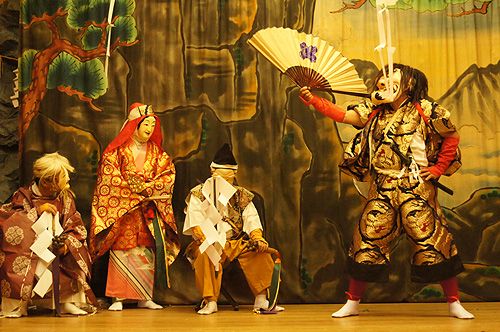
Source : https://plaza.rakuten.co.jp/asodiary/diary/201611010000/
The origin of Kagura performance is said to be the dance of 天鈿女命(Amenouzume-no-mikoto).
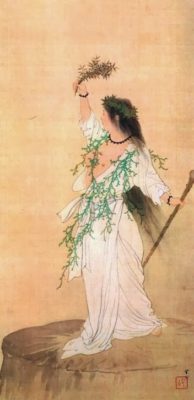
Source : Pinterest
She is one of the deities in Shintoism. Her performance affected not just Kagura performance but also other traditional performing arts of Japan. People worship her as “芸能の神(Geino no kami, the goddess of entertainment)”.
The legend of Ama-no-Iwato(天の岩戸, the rock cave) from Kojiki(古事記) Japanese Mythology
So how was the goddess of entertainment’s performance?
This story comes from 古事記(Kojiki) which is the oldest classic book of Japanese mythology. The most famous mythology in Kojiki is “天の岩戸(Ama-no-iwato)”, means the rock cave.
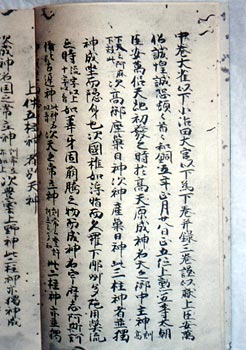
Source : Wikipedia
Long long time ago, there was a world of gods, called 高天原(Takamagahara). There were 天照大神(Amaterasu Omikami) who was the Sun Goddess and her brother 須佐之男命(Susanoo).
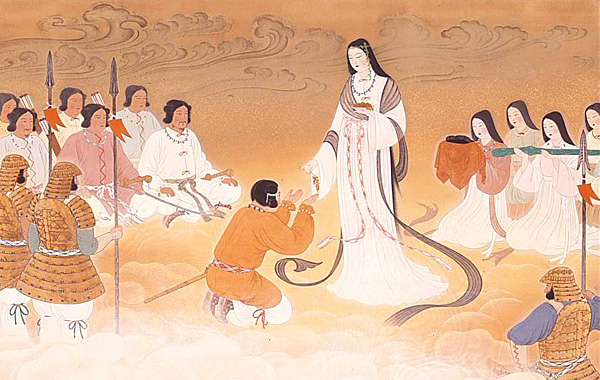
Source : 伊勢神宮
Susanoo always messed things around, like destroying rice fields, blocked the waterway, disgraced sacred places etc.

Source : https://www.shinwanosekai.info/susanoo.php
One day, a lady was weaving and Susanoo wanted to surprise her. He sneaked to the room and threw a skinned horse from the ceiling. The lady was shocked badly and fainted. By the shock, she was crashed into the loom table and one tool stubbed into her. The lady passed away.
The Sun Goddess always tried to be tolerant and forgive her younger brother but this time, she got furious and hid in a rock cave. Because she is the goddess of the sun, the world lost the light and became completely dark. Soon, plants started to die and people got sick.
All deities around Japan gathered in front of the cave and discussed how to convince the Sun Goddess to go out from the cave. They tried many things. First, they brought roosters which are thought to be a messenger of the Sun and let them crow. But it didn’t work. Then they performed a ritual prayer, made special three sacred treasures (later they symbolize the Japanese Imperial throne), etc.
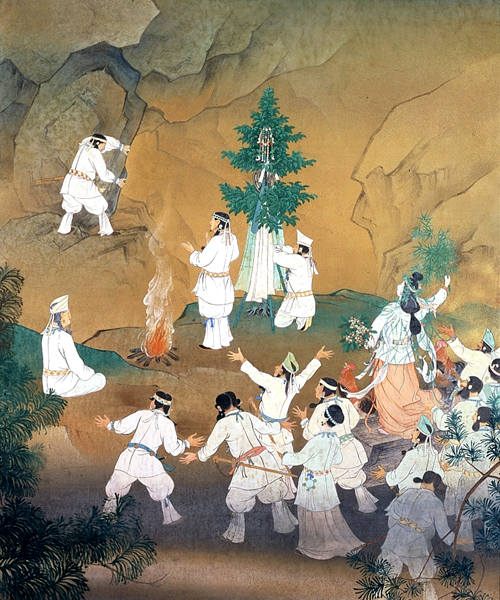
All didn’t work and they tried another plan. One deity, which I introduced earlier called, 天宇受売命(Amenouzume-no-mikoto) who is known as the goddess of entertainment, started to dance in front of the cave. All deities clapped their hands, danced and sang together. It actually turned out to be a lively festival. The Sun Goddess wondered what they were doing because the world should be dark and miserable. There was another god who has extreme physical strength waiting in front of the cave. When the Sun Goddess opened the rock a little to check, the strongest god opened up the cave and the world got sun light back gain. After that the world regained peaceful, the evil brother Susanoo was exiled from the world of gods.
Nagano Iwato Kagura Performance(長野岩戸神楽) at Nagano Aso Shrine(長野阿蘇神社)
So now, let’s see how Kagura Performance at Nagano Aso Shrine and how it is different from other Kagura Performance in Japan.
Kagura performance is played at shrines around Japan. The one at Nagano Aso Shrine is distinctively called “長野岩戸神楽(Nagano Iwato Kagura)”. Over 300 years ago, a person called 長野九郎左衛門(Kurozaemon Nagano) traveled around Japan, saw and learned about Kagura performance in each area and accomplished Nagano Iwato Kagura.

Nagano Iwato Kagura is performed in May and October every year(May is the time of rice-planting and October is harvest time.). Sadly, they couldn’t have it in this May because of the coronavirus.

This is 神楽殿(Kaguraden hall) where Kagura is performed. Usually, it is closed but because it was a cleaning day by locals, all the doors were opened. I was watching it from outside and one kind lady spoked to me and said I could enter the hall.
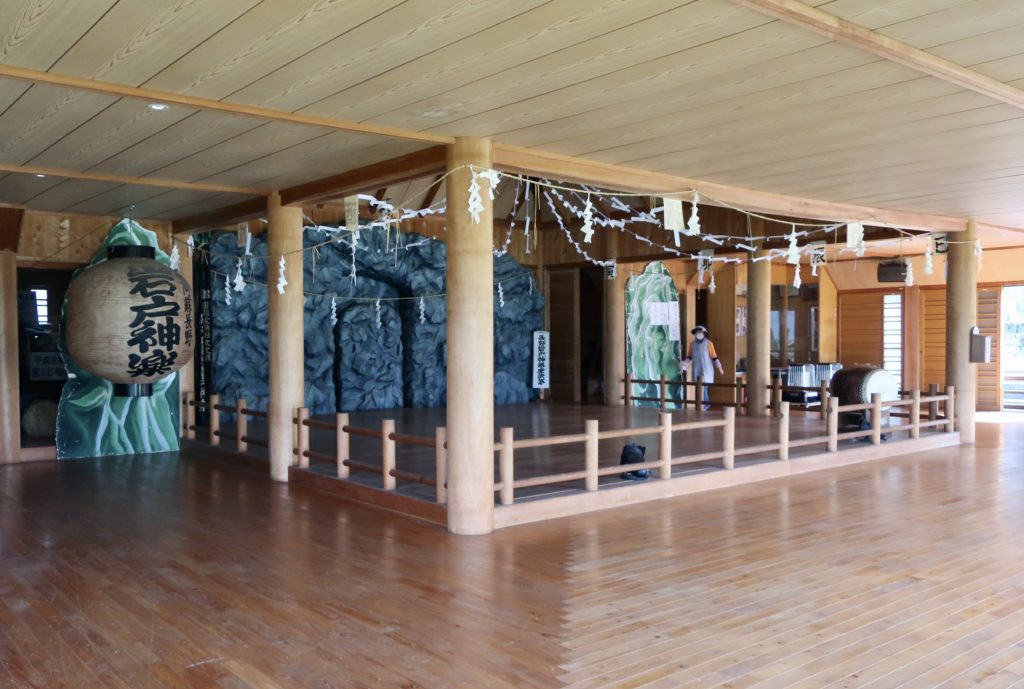
You can see the stage and the rock cave where the Sun Goddess hid. This hall is spacious but on the festival day, it will be crowded by locals and visitors.
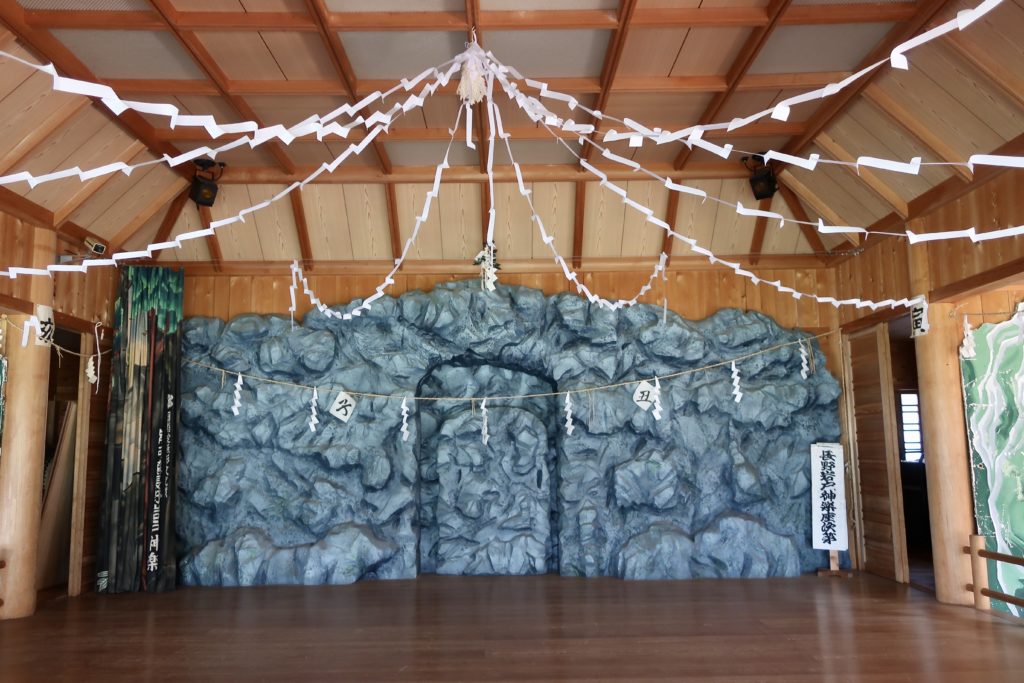
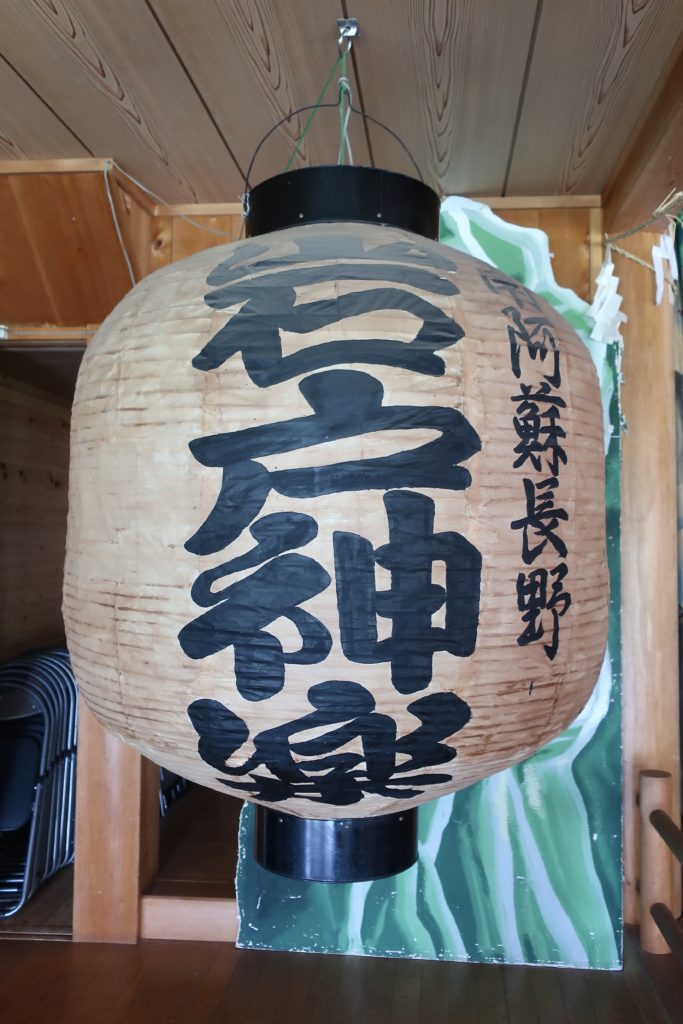
Nagano Iwato Kagura consists of 33 parts. The first part is 神下ろし(Kami-orshi) which means asking gods to come to the stage and welcome them by dance and music. Then, the legend of Ama-no-Iwato is performed. Throughout the performance, you hear the bell sound which is believed that we can attract and invite gods. Nagano Iwato Kagura has more than 300 years of history and is registered as Intangible Cultural Heritage.
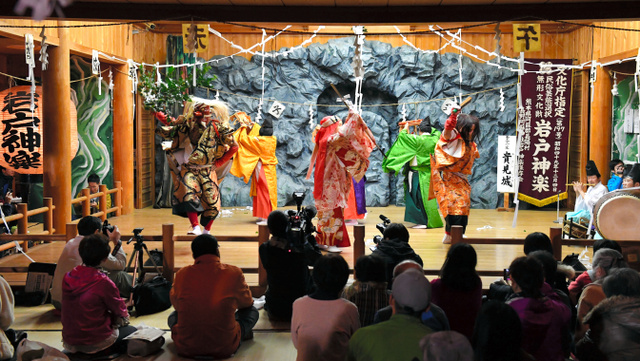
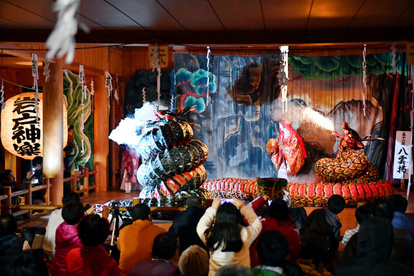
Source : 朝日新聞
What is unique about Nagano Iwato Kagura is “天王注連(Tennoushime)”. In this part, an actor climbs a bamboo stick(about 15m high) and grabs three sacred treasures from the top.
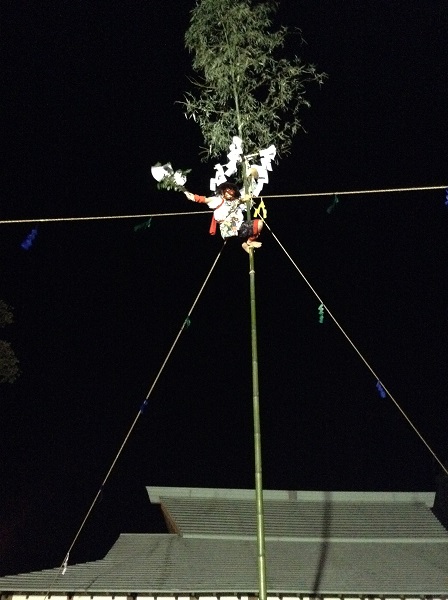
Source : 阿蘇地域農業遺産
It is acrobatic and performed outside so you will enjoy the lively atmosphere.

I haven’t seen any Kagura before. Hopefully, I can visit there this October and share more information with you.
I found a YouTube video of Nagano Iwato Kagura. It says that this video doesn’t include 天王注連(Tennoushime) because of the rain. But still, you can enjoy what Nagano Iwato Kagura is like!
What else can we enjoy near Nagano Aso Shrine?
When you visit Nagano Aso Shrine, explore more around southern Aso area. I have introduced these places below so check them and hope you will enjoy more!
Mt. Tawara Observatory(俵山展望所) in Minamiaso Village(南阿蘇村)
Mt. Tawara Observatory is famous for this panoramic view. It stands in west-south part of Aso caldera so you can see the different view of mountains in caldera and also southern outer rim which spreads out there. It takes about 20 minutes by car from Nagano Aso Shrine. From Kumamoto City, I recommend you to visit the observatory first and then go to the shrine.
Kamishikimi Kumanoimasu Shrine(上色見熊野座神社) and Cedar of Lord Takamori(高森殿の杉) in Takamori Town(高森町)
When I visited Nagano Aso Shrine, I also visited Kamishikimi Kumanoimasu Shrine and Cedar of Lord Takamori in Takamori Town. It will be a long drive from Kumamoto City but you can enjoy the beautiful scenery with southern outer rim of Aso caldera and in Takamori Town, you can see Mt. Nekodake which is a part of Mt. Aso.
Visit Nagano Aso Shrine(長野阿蘇神社) and be immersed in their culture!
To be honest, when I visited Nagano Aso Shrine, I didn’t expect to learn this much of their history and culture.
Every place has each history and we should pass on them to the next generation. I look forward to explore more untapped places and share them with you here.
Visit Nagano Aso Shrine if possible in May or October to see Nagano Iwato Kagura performance. You will be amazed by it and feel the history and culture which locals are proud of.
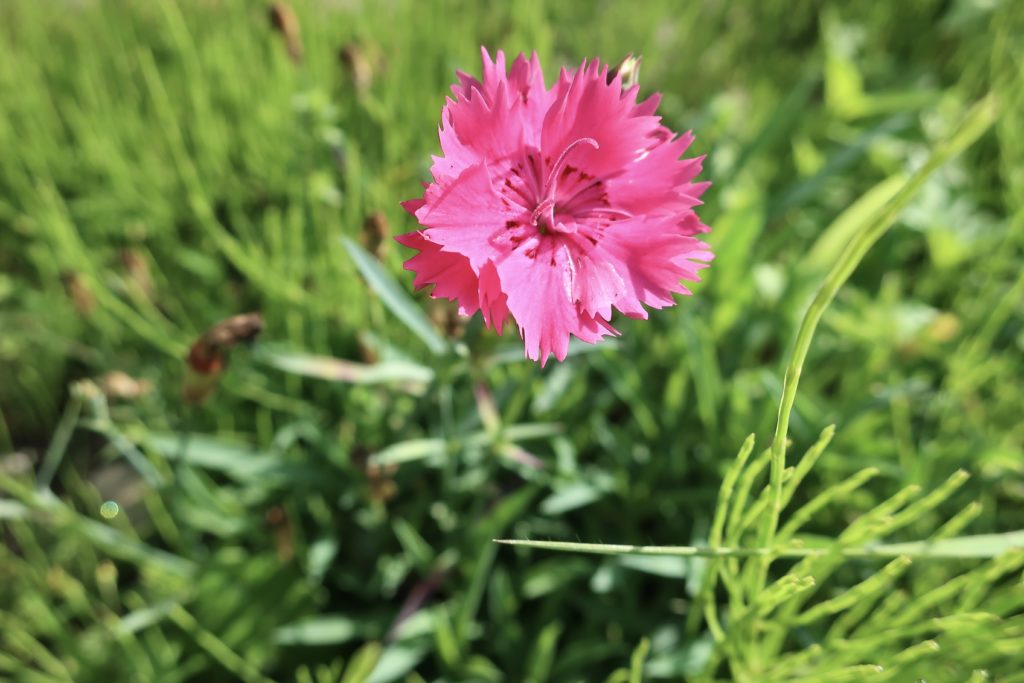
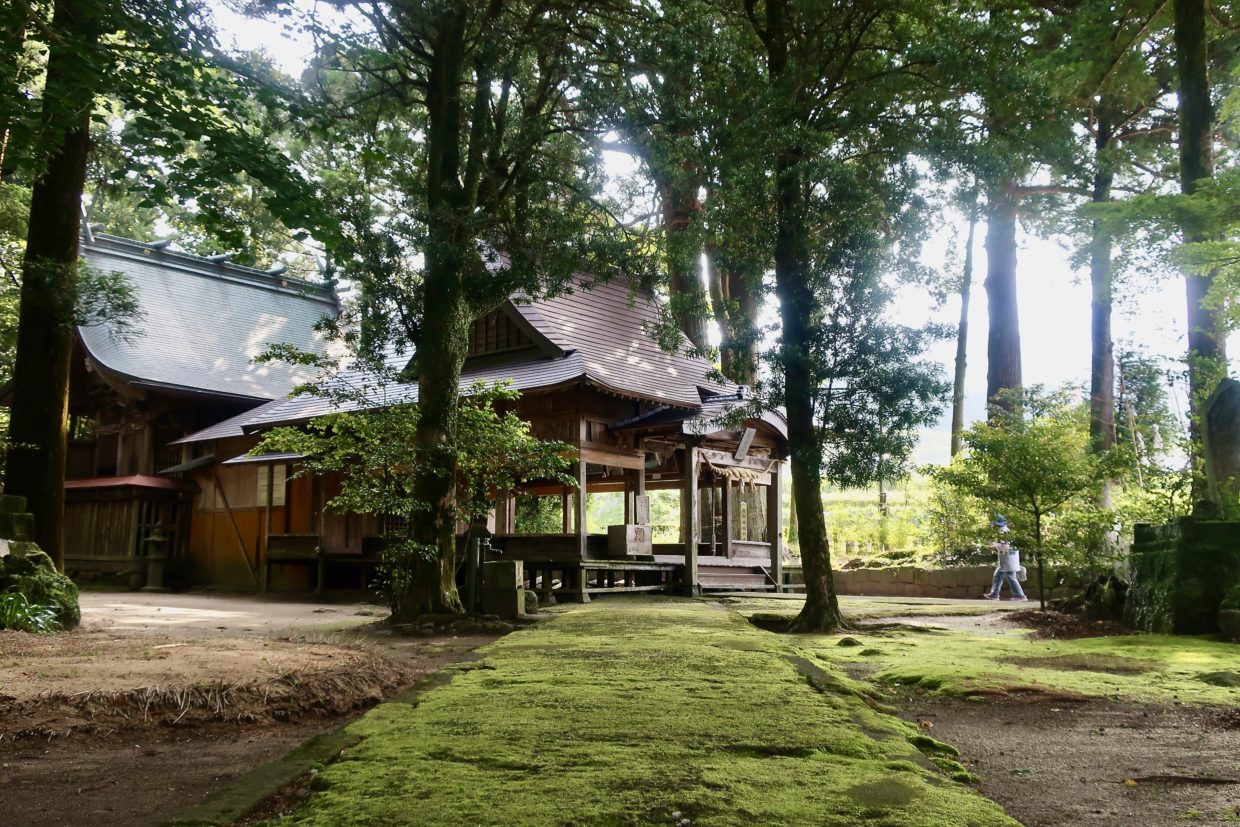

3 ピンバック